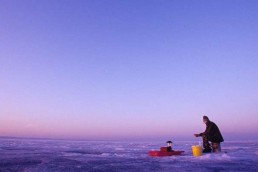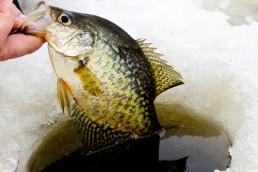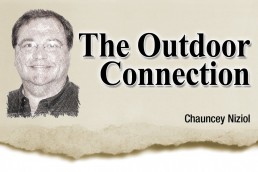Navigating November’s Bounty of Outdoor Options
SHARE THIS POST
Fishing in November: Brain Brosdahl Fall Fishing Advice
November is when lakes in much of the upper Midwest begin to change from open water to ice. There will usually be lakes somewhere in my extended neighborhood that have enough ice to walk on by Thanksgiving weekend, so the countdown to ice has begun.
November is going to be cold at night, regardless of what time of month you are talking about. The first measurable snowfall that sticks to the ground often happens in early November, usually during the rifle deer season in Minnesota.
The first snowfall is usually viewed as a good thing. It helps deer hunters see deer sign and the brown-colored deer become more visible in the woods against a white background. It also helps hunters that are fortunate enough to get a shot at a deer and need to track the animal.
Grouse and small game are also still open in November, along with some waterfowl. So, there are still plenty of hunting options during November to keep people occupied while they wait for fishable ice.
Muskie anglers are often the last people on the lakes, with good muskie and big-pike action continuing until anglers can no longer get their boats into the water.
Head for the shallows
Tulibees and whitefish are fall spawners and an important forage species for large predators This can mean many of the largest fish in the lakes are targeting whitefish and tulibees that come into the shallows to spawn.
Tulibees and whitefish spawn in many of the same areas used by walleyes and suckers to spawn in the spring. This unusual concentration of a preferred forage species can draw in muskies and big pike from all over the lakes. It may also attract huge walleyes and bass.
Late in the open-water season, anglers will find walleyes, crappies, sunfish and perch in the same general areas where they will be located early in the ice-fishing season.
Anglers can get a huge amount of intel just by going out in their boats in November and checking areas out with their electronics to mark specific locations for ice-fishing.
I can’t properly tell you how important Humminbird’s Mega technologies and LakeMaster map chips are to my success as a guide. I can look at potential locations and see all of the rocks, all of the weeds and all of the structure on my sonar as well as the baitfish and the larger fish. I can even see the insect hatches starting before they happen.
If my sonar would break down on a guide trip, I would feel totally lost. During the winter, if I forget my sonar, I need to go back home and get it. I’d almost prefer to forget my boots than not have my electronics.
Are you enjoying this post?
You can be among the first to get the latest info on where to go, what to use and how to use it!
I am basically ice-fishing from my boat in November. I usually hold my boat in position using the “Spot Lock” feature on my Ulterra Minn Kota trolling motor or by using my pair of 15 foot Talons.
Faking out the fish
I often use artificial jigging lures instead of jigs and small minnows when I fish crappies late in the open-water season or during the winter.
Crappies are visual feeders. As long as the lure is the right size and has the right profile, the crappies will eat it if they can see it. You don’t need any meat.
I like to use the Northland Puppet Minnows for crappies. I usually start with the number two Puppets on 4-pound fluorocarbon. They sink faster than the number ones and I don’t like to worry about my knot when I am busy catching fish.
If the crappies are being line shy, I will downsize to a number one Puppet with 3-pound fluorocarbon Sunline.
I also like Northlands’ Forage Dart with a plastic Impulse Skeleton Tail on the back hook or a couple of eurolarvae on the treble hook if the fish are being really finicky. I also like to use Northland 1/32-ounce Thumper Jigs with a small minnow or Impulse Plastic tail.
Getting around on the hard water
I start out the ice-fishing season on foot as soon as there are at least four inches of good ice on a shallow spot close to shore that I have found over the years.
When there are at least seven inches of ice, I will use my snowmobile or ATV. My next move is into my little four-wheel-drive car when there are at least nine inches of good ice. When there is a good foot of ice, I switch to my small truck. Once there are at least 15 inches of ice on the lakes, I can use my full-size truck.
November is the month when fall turns to winter. The actual circumstances change from year to year, but it’s going to happen eventually. Roll with the changes and get ready, ice-fishing is on its way!
Brian “Bro” Brosdahl is a fishing guide and Outdoor Communicator. He can be booked for guided trips bbro@paulbunyan.net or brosguideservice.com.
MWO
SHARE THIS POST
Did you enjoy this post?
You can be among the first to get the latest info on where to go, what to use and how to use it!
Brian 'Bro' Brosdahl
Outdoor communicator Brian “Bro” Brosdahl lives in northern Minnesota. He is a walleye guide in the Cass Lake, Leech Lake and Lake Winnibigoshish areas. He is sponsored by Northland Fishing Tackle, Frabill/Plano, Aqua-Vu, Humminbird/Minn Kota, St. Croix Rods, Ranger Boats, and Evinrude. Guide inquiries: brosguideservice.com. Follow on social media.


